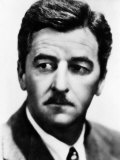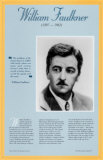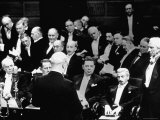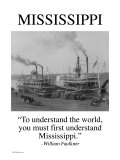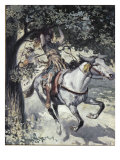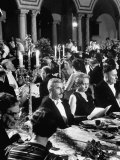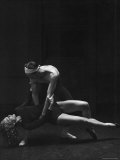|
|
|||||||||
|
|||||||||
|
|
|||||||||
 |
|||||||||
|
|
|||||||||
William Faulkner Posters, Books, Videos, Links for Learning
|
||||||||||||||||||||||||||||||||||||||||||||||||||||||||||||||||||||||||||
|
literature > author list > WILLIAM FAULKNER < famous men < social studies |
||||||||||||||||||||||||||||||||||||||||||||||||||||||||||||||||||||||||||
|
William Faulkner William Faulkner, one of the greatest American authors, is also one of the most influential writers of the twentieth century. He was awarded the 1949 Nobel Prize for Literature for “for his powerful and artistically unique contribution to the modern American novel.” Other “Southern writers” of note include Mark Twain, Tennessee Williams, Truman Capote, Flannery O'Connor, Sidney Lanier, and Thomas Wolfe. Faulkner's body of work featured a fictional “Yoknapatawpha County” in his native state of Mississippi, where his family's history stretched back to before the American Civil War. In addition to his novels, Faulkner was also a short story writer, film screenwriter, and poet. Faulkner was known for an experimental style with meticulous attention to diction and cadence, in contrast to the minimalist understatement of his peer Ernest Hemingway. Although Faulkner is sometimes lauded as the inventor of the “stream of consciousness” technique in fiction, this is misleading. Other writers such as Henry James, James Joyce and Edouard Dujardin had used this technique before him. While his work was published regularly from the mid 1920s to the late 1940s, he was relatively unknown before receiving the Nobel Prize in Literature in 1949 and now he is widely seen as among the greatest American writers of all time. |
||||||||||||||||||||||||||||||||||||||||||||||||||||||||||||||||||||||||||
WILLIAM FAULKNER BOOKS, VIDEO, AUDIOWilliam Faulkner : Novels 1930-1935: As I Lay Dying / Sanctuary / Light in August / Pylon - Between 1930 and 1935, William Faulkner came into full possession of the genius and creativity that made him America's greatest writer of the twentieth century. “As I Lay Dying” is a dark comedy, full of horror and compassion, of a rural Mississippi family bearing the corpse of their matriarch to burial in town. “Sanctuary,” a violent novel of sex and social class that moves from Mississippi back roads to the flesh-pots of Memphis, features a sadistic gangster named Popeye and a debutante with an affinity for evil. “Light in August,” a near-religious vision of the hopeful stubbornness of ordinary life, is perhaps Faulkner's most moving work. “Pylon,” a tale of barnstorming aviators, examines the bonds of loyalty and desire among three men and a woman. (Book Description) William Faulkner : Novels 1936-1940: Absalom, Absalom / Unvanquished / If I Forget Thee, Jerusalem / The Hamlet - These four novels show one of America's greatest writers at the height of his powers. Presented in authoritative new texts, they explore the struggles of characters in a South caught between a romantic and a tragic past and the corrupting enticements of the present. In “Absalom, Absalom” Quentin Compson and his Harvard roomate re-create the story of the insanely ambitious patriarch Thomas Sutpen – and discover that his grief, pride, and doom are the inescapable legacy of a past that is not dead. “The Unvanquished” recounts the ordeals and triumphs of the Sartoris family during and after the Civil War. In “If I Forget Thee, Jerusalem” (first published as “The Wild Palms”), paired stories tell of desperate lovers and a fleeing convict. In “The Hamlet,” the outrageous scheming energy of Flem Snopes and his clan is vividly and hilariously juxtaposed with the fragile community and customs of Frenchman's Bend, Mississippi. William Faulkner : Novels 1942-1954: Go Down Moses / Intruder in the Dust / Requiem for a Nun / A Fable - The years 1942 to 1954 saw Faulkner's greatest success – and greatest inner anguish. Plagued by depression and alcohol, he knew he had more to achieve and a finite amount of time and energy to achieve it. This volume gathers four groundbreaking works from this fascinating period. “Go Down, Moses” is a haunting novel that explores the intertwined lives of black, white, and Indian inhabitants of Yoknapatawpha County. It includes “The Bear,” one of the most famous works in American fiction. "Intruder in the Dust," a detective novel, is a compassionate story of a black man on trial and the growing moral awareness of a southern white boy. “Requiem for a Nun” tells the fate of a passionate, haunted Temple Drake and her tortured redemption. “A Fable,” Faulkner's recasting of the Christ story set in World War I, earned him the 1955 Pulitzer Prize. (Book Description) William Faulkner : Novels 1957-1962: The Town / The Mansion / The Reivers - William Faulkner's fictional chronicle of Yoknapatawpha County culminates in his three last novels, rich with the history and lore of the domain where he set most of his novels and stories. “The Town” (1957), the second novel of the Snopes trilogy that began with “The Hamlet,” charts the rise of the rapacious Flem Snopes and his extravagantly extended family as they connive their way into power. In “The Mansion” (1959), the trilogy's conclusion, a wronged relative finally destroys Flem and his dynasty. Faulkner's last novel, “The Reivers: A Reminiscence” (1962), distinctly mellower and more elegiac than his earlier work, is a picaresque adventure that evokes the world of childhood with a final burst of comic energy. “Novels 1957-1962,” like previous volumes in The Library of America's edition of the complete novels of William Faulkner, has been newly edited by textual scholar Noel Polk to establish an authoritative text, that features a chronology and notes by Fau! lkner's biographer, Joseph Blotner. (Book Description) Uncollected Stories of William Faulkner - These forty-five stories include not only some of Faulkner's best, but also what proved to be the testing ground for what latter became such major novels as The Unvanquished, The Hamlet and Go Down, Moses. (Book Description) William Faulkner A to Z: The Essential Reference to His Life and Work - One of the greatest and most influential American writers, William Faulkner is remembered for novels and short stories that explore the intricate culture and tragic legacy of the American South. William Faulkner A to Z is the first comprehensive reference to his life, including writings, characters, people, events, and ideas that influenced him as a person and a writer. Faulkner and the Natural World (Faulkner & Yoknapatawpha Conference) - Although he belonged to an American generation of writers deeply influenced by the high modernist revolt “against nature” and against the self imposed limits of realism to a palpable world, William Faulkner reveals throughout his works an abiding sensitivity to the natural world. He writes of the big woods, of animals, and of the human body as a “ground of being” that art and culture can neither transcend not completely control. Famous Authors, William Faulkner, 1996–VHS Tape Famous Writers, William Faulkner, 2001–VHS Tape LINKS FOR LEARNING : WILLIAM FAULKNER |
||||||||||||||||||||||||||||||||||||||||||||||||||||||||||||||||||||||||||
|
|
|
|
|
NPW home | Global PathMarker Collection | APWTW Blog | faqs-about | contact | search | privacy |
|
NetPosterWorks.com ©2007-2015 The Creative Process, LLC All Rights Reserved. |
last updated






